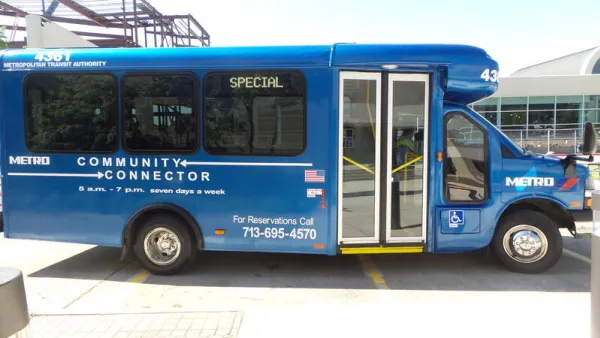Transit ridership has been waning in Charlottesville, Virginia, but a regional system could benefit the area’s operators and better meet the mobility needs of riders.

A regional transit system in Charlottesville, Virginia, could be the solution to the area's mobility challenges, including a drop in ridership on the Charlottesville Area Transit system of more than 25 percent in the last five years.
"By [CAT director Garland] Williams' own admission the current system is failing riders due to unreliability, decreasing coverage, and one-way routes that serve CAT better than they do its customers," writes Wyatt Gordon.
The Jefferson Area Regional Transit Partnership Expansion is an advisory body exploring expansion through establishment of a regional transit authority. An authority would bring together the three transit operations in the area: CAT, University of Virginia’s student shuttle, and JAUNT, a microtransit service for regional commuters.
"If the three are able to stitch together their services under one umbrella as a regional transit authority that could unlock new state and federal funding that none are eligible for on their own," notes Gordon.
The Charlottesville area is facing increased housing costs, congestion, and pollution, making improved mobility a policy priority. "With sprawl on the rise and more locals driving to work from far-flung counties, it makes sense that the region is seeing a renewed push for transit—and may be willing to pay for it," adds Gordon.
FULL STORY: Could regional expansion solve Charlottesville, Virginia’s transit “death spiral?”

National Parks Layoffs Will Cause Communities to Lose Billions
Thousands of essential park workers were laid off this week, just before the busy spring break season.

Retro-silient?: America’s First “Eco-burb,” The Woodlands Turns 50
A master-planned community north of Houston offers lessons on green infrastructure and resilient design, but falls short of its founder’s lofty affordability and walkability goals.

Delivering for America Plan Will Downgrade Mail Service in at Least 49.5 Percent of Zip Codes
Republican and Democrat lawmakers criticize the plan for its disproportionate negative impact on rural communities.

Test News Post 1
This is a summary

Test News Headline 46
Test for the image on the front page.

Balancing Bombs and Butterflies: How the National Guard Protects a Rare Species
The National Guard at Fort Indiantown Gap uses GIS technology and land management strategies to balance military training with conservation efforts, ensuring the survival of the rare eastern regal fritillary butterfly.
Urban Design for Planners 1: Software Tools
This six-course series explores essential urban design concepts using open source software and equips planners with the tools they need to participate fully in the urban design process.
Planning for Universal Design
Learn the tools for implementing Universal Design in planning regulations.
EMC Planning Group, Inc.
Planetizen
Planetizen
Mpact (formerly Rail~Volution)
Great Falls Development Authority, Inc.
HUDs Office of Policy Development and Research
NYU Wagner Graduate School of Public Service




























